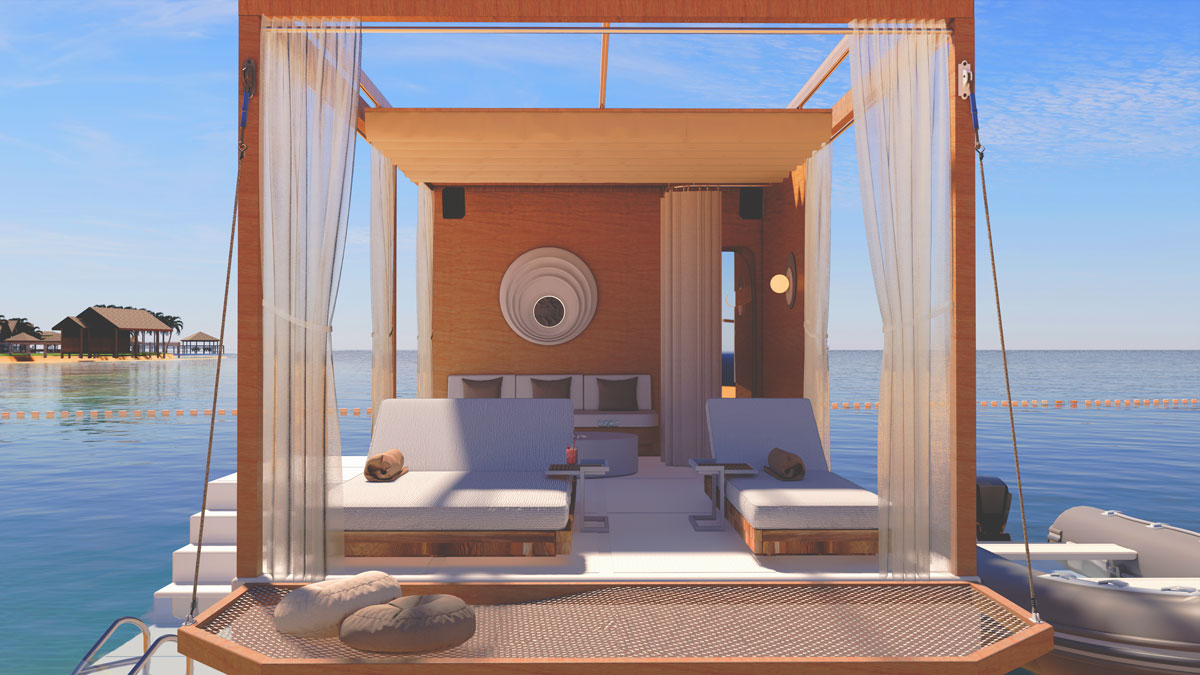
Beach holidays are no longer limited to the traditional trio of sea, sand, and sun. Today’s travelers crave unique experiences that blend relaxation with innovation. Enter the Floating Lounge, an innovative addition to waterfront properties [...]

Conventional water intake units are structures that allow the water to be taken from the water-basin (river, dam or lake) and transported to the transmission lines. These structures are used in many places in the world for a multitude of purposes.
The aim here is: the ability to take water at any time, the constant flow of water despite the changes that may occur (water rises or subsides in the basin), the quality and cleanness of the water received; while trying to maintain low maintenance costs. Therefore, the main water intake units should be used according to the field and general conditions that are listed as follows.
In brief, free surface water intake structures are referred to as the direct flow of water surface to the transmission line. In this approach, where the water is directed to the transmission line by a natural current close to the shore line, the possibility of carrying the alluvial water is quite high, so it is necessary to rest in the sedimentation ponds before directing the water to the transmission channel. The basic condition for making the free surface dewatering unit is that the transmission line is below the water level and thus creates natural flow.

Pressurized water intake structures are used when the place where the water will be transported is higher than the current water level. Pressurized water intake structures are generally: tower type, well type and so on.
Floating intake unit is constructed by placing the pump station in body of water and connecting the pipeline leading to it by a floating bridge or way line. As an alternative to open free surface water intake structures with this method, filtration and sedimentation costs will be significantly reduced as the quality and alluvial rate of the water taken from a more stable region of water and the upper elevation of the water will be much lower.

HSB Marine, Mousul Dam/ Iraq Project 4m x 500m floating bridge and pump station.
Another feature of the floating intake unit is that it is an alternative to the pressure (tower type) intake units. Since industrial submersible pumps can be used as pump selection, performance and capacities will increase and energy consumption will be reduced significantly.
Floating water intake unit is a solution that stands out with investment costs. In the basins where the water vertical level varies, there are very large distance changes in the coastal line. It is necessary to reach the deep points of the water basin to ensure continuity in the water receiving unit. For this, it is necessary to use piled bridges and lift pumps with conventional solutions. Since the cost of such structures is quite high, it is also very difficult to construct them after the water basin is operational. A solution for this, floating brigdes can be built with amphibious floating concrete modules that can be placed both on land and on water.

Amphibious Floating Concrete Pontoons
When the water level rises, the concrete modules that turn into floating piers serve as a sheltered road on land by adapting to the shape of the ground with the descent of water. Since the modules are connected to each other by a special joint and shock absorber flexible connection system, they can be used even in areas where the shore structure has a high slope of up to 45 degrees.
All kinds of technical equipment can be placed on the floating pump station. There are service gaps in the middle parts of the float platform where the pump can be lowered and operated (as many as the number of pumps). At the bottom of the platform there are grids that prevent the pumps from damaging the living entities in the water during suction and prevent the objects floating on the water from entering the suction unit.
Floating dewatering units are a very economical method of supplying water to remote areas from the central collection unit in large water or dam basins. Instead of piping, ducting and pressure costs for supplying water to an area several kilometers away from the central pumping station, water can be supplied by a floating water receiving unit from the nearest water basin to the area in need.
These applications, which have become a necessity in recent years, have started to be used in many areas such as city water supply and agricultural irrigation needs, especially in newly developing regions.

Floating pump station 27m x 13,5m and 120 ton buoyancy capacity.
The highest capacity and longest water intake unit in the world was realized by HSB Marine in the Mosul Dam region. As the water line changed in the 42 meter deep vertical basin, HSB constructed an approximately 450 – 500 meter floating bridge. 50 meters of the bridge move with the water (up or down), while the remaining 450 meters are constantly floating.
HDPE pipes run over this 4 meters wide floating bridge. At the end of the floating bridge way, there is a giant platform of 13,5m x 27 meters. On the platform, there are 4 submersible pumps, 1 transformer, maintenance cranes and other mechanical parts with a total weight of 80 tons. The concrete structure produced floats on the water as a single piece platform. A German investor company provided drinking water to the city with this project.
